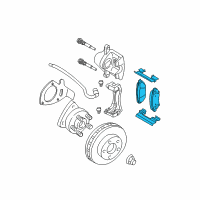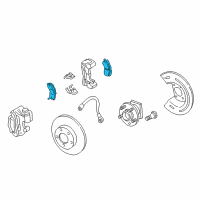< Back ×
2005 Buick LeSabre Brake Pad Set
My Vehicle Change Vehicle
2005 Buick LeSabre
< Back to View All
Brake Pads, Discs & Calipers
- Department
- Friction Material Composition
- Material
- Series
- Brands
- Prices
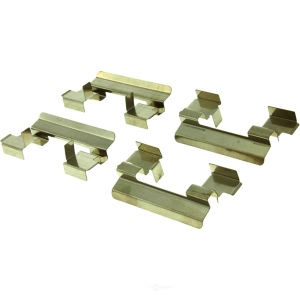

Centric® Posi Quiet™ Extended Wear Semi-Metallic Front Disc Brake Pads for 2005 Buick LeSabre
PartNumber: 106.10760$48.90Product Specifications- Notes: 16" Wheels
- UPC: 805890300953
- Part Description: 2005 Buick LeSabre Posi Quiet™ Extended Wear Semi-Metallic Front Disc Brake Pads
Vehicle Fitment- 2005 Buick LeSabre | All Trims | All Engines
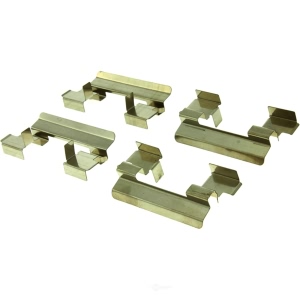

Centric® Posi Quiet™ Extended Wear Semi-Metallic Front Disc Brake Pads for 2005 Buick LeSabre
PartNumber: 106.06990$27.46Product Specifications- Notes: 15" Wheels
- UPC: 805890061007
- Part Description: 2005 Buick LeSabre Posi Quiet™ Extended Wear Semi-Metallic Front Disc Brake Pads
Vehicle Fitment- 2005 Buick LeSabre | All Trims | All Engines
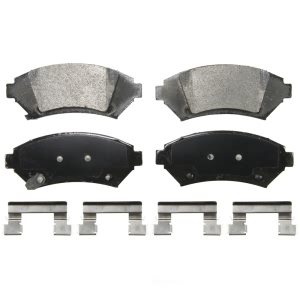
 $52.88Product Specifications
$52.88Product Specifications- Notes: with 16in Steel Wheels;1st Design;To VIN # 129025;Includes Pad Installation Hardware
- Chamfer Option: With Chamfers
- FMSI: D818
- Friction Material: Semi-Metallic
- Hardware Option: Included
- Inner Pad Thickness: 17.018mm (0.67")
- Outer Pad Thickness: 17.018mm (0.67")
- Quantity: Sold as Set
- Series: SevereDuty™
- Shims Option: With Shims
- Slot Option: Without Slot
- UPC: 008536404101
- Wear Sensor Option: With Mechanical Wear Sensor
- Part Description: 2005 Buick LeSabre Severeduty Semi Metallic Front Disc Brake Pads
Vehicle Fitment- 2005 Buick LeSabre | All Trims | All Engines

 $24.71Product Specifications
$24.71Product Specifications- Notes: 15" Wheels
- UPC: 805890164715
- Part Description: 2005 Buick LeSabre Posi Quiet™ Ceramic Front Disc Brake Pads
Vehicle Fitment- 2005 Buick LeSabre | All Trims | All Engines

 $37.80Product Specifications
$37.80Product Specifications- Notes: 2nd Design;Includes Pad Installation Hardware;with 16in Steel Wheels;From VIN # 129026;OE Pad Material is Semi-Metallic
- Chamfer Option: Without Chamfers
- FMSI: D1076
- Friction Material: Semi-Metallic
- Hardware Option: Included
- Inner Pad Thickness: 17.78mm (0.7")
- Outer Pad Thickness: 17.78mm (0.7")
- Quantity: Sold as Set
- Series: ThermoQuiet™
- Shims Option: With Shims
- Slot Option: Without Slot
- UPC: 008536443384
- Wear Sensor Option: With Mechanical Wear Sensor
- Part Description: 2005 Buick LeSabre Thermoquiet Semi Metallic Front Disc Brake Pads
Vehicle Fitment- 2005 Buick LeSabre | All Trims | All Engines
- $72.50 MSRP:
$136.82You Save: $64.32 (48%)Product Specifications- Notes: W/16" Wheel; Lesabre; W/O 15x6 Wheel
- Other Names: Brake Pads, Front Pads
- Item Dimensions: 10.0 x 4.9 x 3.4 inches
- Item Weight: 4.10 Pounds
- Fitment Type: Direct Replacement
- Replaces: 18042214, 18045380, 18042442, 18048030, 88964119
- Part Description: 2005 Buick LeSabre Front Pads
Vehicle Fitment- 2005 Buick LeSabre | Custom, Limited | 6 Cyl 3.8 L GAS
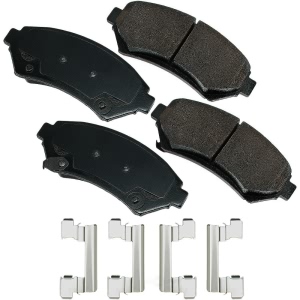

Akebono® Pro-ACT™ Ultra-Premium Ceramic Front Disc Brake Pads for 2005 Buick LeSabre
PartNumber: ACT699$63.47Product Specifications- Notes: Contents Premium Stainless Hardware Incld; OE Pad Material is Ceramic
- FMSI: D699-7574
- Friction Material: Ceramic
- Quantity: Sold as Set
- Series: Pro-ACT™ Ultra-Premium
- UPC: 826732107493
- Part Description: 2005 Buick LeSabre Pro-ACT™ Ultra-Premium Ceramic Front Disc Brake Pads
Vehicle Fitment- 2005 Buick LeSabre | All Trims | All Engines
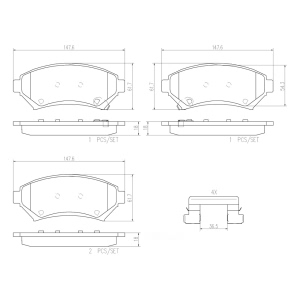
 $40.92Product Specifications
$40.92Product Specifications- Notes: 15" Wheels
- Brake System: Wagner
- Hardware Material: with hardware
- Height: 61.7
- Indicator Type: with acoustic wear indicator
- Nominal Thickness (mm): 18
- OE Part Number: 18024961, 18029827, 18029828, 18042214, 18042442, 18045380, 18048030, 19152666, 19152498
- Surface Type: chamfered
- Width (mm): 147.6
- Wva: 23358 / 23359 / 23360
- Part Description: 2005 Buick LeSabre Premium Ceramic Front Disc Brake Pads
Vehicle Fitment- 2005 Buick LeSabre | Custom | All Engines
- 2005 Buick LeSabre | Limited | All Engines

 $24.31Product Specifications
$24.31Product Specifications- Notes: Ceramic
- Friction Material: Semi-Metallic
- Hardware Option: Included
- Quantity: Sold as Set
- Series: Blue™
- UPC: 077212005628
- Part Description: 2005 Buick LeSabre Blue™ Semi-Metallic Rear Disc Brake Pads
Vehicle Fitment- 2005 Buick LeSabre | All Trims | 6 Cyl 3.8L
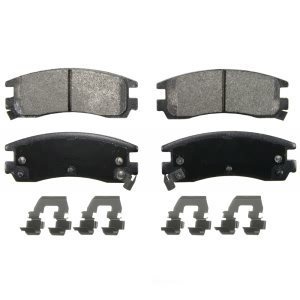
 $40.23Product Specifications
$40.23Product Specifications- Notes: Includes Pad Installation Hardware
- Chamfer Option: With Chamfers
- FMSI: D714
- Friction Material: Semi-Metallic
- Hardware Option: Included
- Inner Pad Thickness: 13.716mm (0.54")
- Outer Pad Thickness: 13.716mm (0.54")
- Quantity: Sold as Set
- Series: SevereDuty™
- Shims Option: With Shims
- Slot Option: Without Slot
- UPC: 008536401391
- Wear Sensor Option: With Mechanical Wear Sensor
- Part Description: 2005 Buick LeSabre Severeduty Semi Metallic Rear Disc Brake Pads
Vehicle Fitment- 2005 Buick LeSabre | All Trims | All Engines


Centric® Posi Quiet™ Semi-Metallic Front Disc Brake Pads for 2005 Buick LeSabre
PartNumber: 104.06990$14.94Product Specifications- Notes: 15" Wheels
- UPC: 805890164388
- Part Description: 2005 Buick LeSabre Posi Quiet™ Semi-Metallic Front Disc Brake Pads
Vehicle Fitment- 2005 Buick LeSabre | All Trims | All Engines
- $44.73 MSRP:
$126.84You Save: $82.11 (65%)Product Specifications- Notes: Bonneville, Lesabre; W/Gxp
- Other Names: Brake Pads, Rear Pads
- Item Dimensions: 9.9 x 5.0 x 3.4 inches
- Item Weight: 2.20 Pounds
- Fitment Type: Direct Replacement
- Replaces: 18024939, 18024930, 18040160, 18043995
- Part Description: 2005 Buick LeSabre Rear Pads
Vehicle Fitment- 2005 Buick LeSabre | Custom, Limited | 6 Cyl 3.8 L GAS
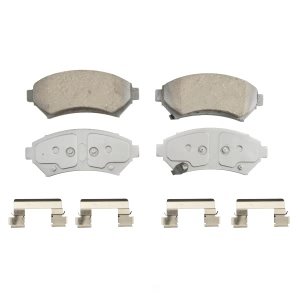
 $34.18Product Specifications
$34.18Product Specifications- Notes: with 15in Wheels;Optional Ceramic;Includes Pad Installation Hardware
- Chamfer Option: With Chamfers
- FMSI: D699
- Friction Material: Ceramic
- Hardware Option: Included
- Inner Pad Thickness: 17.018mm (0.67")
- Outer Pad Thickness: 17.018mm (0.67")
- Quantity: Sold as Set
- Series: ThermoQuiet™
- Shims Option: With Shims
- Slot Option: Without Slot
- UPC: 008536575542
- Wear Sensor Option: With Mechanical Wear Sensor
- Part Description: 2005 Buick LeSabre Thermoquiet Ceramic Front Disc Brake Pads
Vehicle Fitment- 2005 Buick LeSabre | All Trims | All Engines
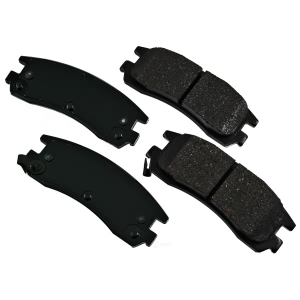

Akebono® Pro-ACT™ Ultra-Premium Ceramic Rear Disc Brake Pads for 2005 Buick LeSabre
PartNumber: ACT714$43.58Product Specifications- Notes: OE Pad Material is Ceramic
- FMSI: D714-7387
- Friction Material: Ceramic
- Quantity: Sold as Set
- Series: Pro-ACT™ Ultra-Premium
- UPC: 821726001375
- Part Description: 2005 Buick LeSabre Pro-ACT™ Ultra-Premium Ceramic Rear Disc Brake Pads
Vehicle Fitment- 2005 Buick LeSabre | All Trims | All Engines

 $25.66Product Specifications
$25.66Product Specifications- Notes: Semi-Metallic
- FMSI: D699-7574
- Friction Material: Semi-Metallic
- Hardware Option: Included
- Quantity: Sold as Set
- Series: Blue™
- UPC: 077212005635
- Part Description: 2005 Buick LeSabre Blue™ Semi-Metallic Front Disc Brake Pads
Vehicle Fitment- 2005 Buick LeSabre | All Trims | All Engines
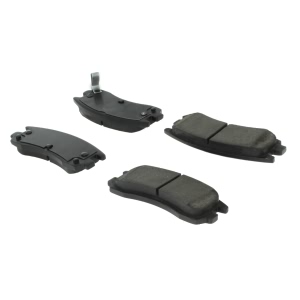
 $21.26Product Specifications
$21.26Product Specifications- UPC: 805890164746
- Part Description: 2005 Buick LeSabre Posi Quiet™ Ceramic Rear Disc Brake Pads
Vehicle Fitment- 2005 Buick LeSabre | All Trims | All Engines
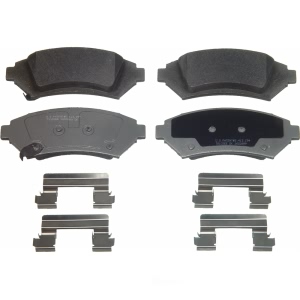
 $31.36Product Specifications
$31.36Product Specifications- Notes: OE Pad Material is Semi-Metallic;with 16in Steel Wheels;Includes Pad Installation Hardware;To VIN # 129025;with Mechanical Wear Sensor;1st Design
- Chamfer Option: With Chamfers
- FMSI: D818
- Friction Material: Semi-Metallic
- Hardware Option: Included
- Inner Pad Thickness: 17.018mm (0.67")
- Outer Pad Thickness: 17.018mm (0.67")
- Quantity: Sold as Set
- Series: ThermoQuiet™
- Shims Option: With Shims
- Slot Option: Without Slot
- UPC: 008536318262
- Wear Sensor Option: With Mechanical Wear Sensor
- Part Description: 2005 Buick LeSabre Thermoquiet Semi Metallic Front Disc Brake Pads
Vehicle Fitment- 2005 Buick LeSabre | All Trims | All Engines

 $31.22Product Specifications
$31.22Product Specifications- Notes: OE Pad Material is Semi-Metallic;Includes Pad Installation Hardware
- Chamfer Option: With Chamfers
- FMSI: D714
- Friction Material: Semi-Metallic
- Hardware Option: Included
- Inner Pad Thickness: 13.716mm (0.54")
- Outer Pad Thickness: 13.716mm (0.54")
- Quantity: Sold as Set
- Series: ThermoQuiet™
- Shims Option: With Shims
- Slot Option: With Slot
- UPC: 008536301745
- Wear Sensor Option: With Mechanical Wear Sensor
- Part Description: 2005 Buick LeSabre Thermoquiet Semi Metallic Rear Disc Brake Pads
Vehicle Fitment- 2005 Buick LeSabre | All Trims | All Engines
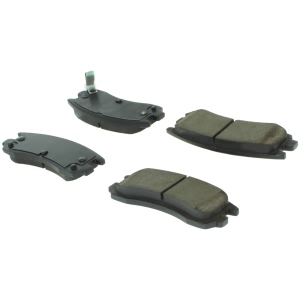

Centric® Posi Quiet™ Extended Wear Semi-Metallic Rear Disc Brake Pads for 2005 Buick LeSabre
PartNumber: 106.07140$21.80Product Specifications- UPC: 805890061038
- Part Description: 2005 Buick LeSabre Posi Quiet™ Extended Wear Semi-Metallic Rear Disc Brake Pads
Vehicle Fitment- 2005 Buick LeSabre | All Trims | All Engines
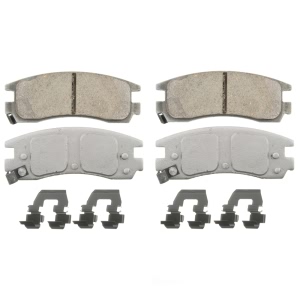
 $30.64Product Specifications
$30.64Product Specifications- Notes: Includes Pad Installation Hardware;Optional Ceramic
- Chamfer Option: With Chamfers
- FMSI: D714
- Friction Material: Ceramic
- Hardware Option: Included
- Inner Pad Thickness: 13.716mm (0.54")
- Outer Pad Thickness: 13.716mm (0.54")
- Quantity: Sold as Set
- Series: ThermoQuiet™
- Shims Option: With Shims
- Slot Option: With Slot
- UPC: 008536575597
- Wear Sensor Option: With Mechanical Wear Sensor
- Part Description: 2005 Buick LeSabre Thermoquiet Ceramic Rear Disc Brake Pads
Vehicle Fitment- 2005 Buick LeSabre | All Trims | All Engines

 $33.24Product Specifications
$33.24Product Specifications- Notes: with 16in Steel Wheels;2nd Design;From VIN # 129026;OE Pad Material is Semi-Metallic;Includes Pad Installation Hardware
- Chamfer Option: Without Chamfers
- FMSI: D1076
- Friction Material: Semi-Metallic
- Hardware Option: Included
- Inner Pad Thickness: 17.78mm (0.7")
- Outer Pad Thickness: 17.78mm (0.7")
- Quantity: Sold as Set
- Series: QuickStop®
- Shims Option: With Shims
- Slot Option: Without Slot
- UPC: 008536481331
- Wear Sensor Option: With Mechanical Wear Sensor
- Part Description: 2005 Buick LeSabre Quickstop Semi Metallic Front Disc Brake Pads
Vehicle Fitment- 2005 Buick LeSabre | All Trims | All Engines


Centric® Posi Quiet™ Semi-Metallic Front Disc Brake Pads for 2005 Buick LeSabre
PartNumber: 104.10760$20.15Product Specifications- Notes: 16" Wheels
- UPC: 805890233886
- Part Description: 2005 Buick LeSabre Posi Quiet™ Semi-Metallic Front Disc Brake Pads
Vehicle Fitment- 2005 Buick LeSabre | All Trims | All Engines


Centric® Premium™ Ceramic Brake Pads With Shims And Hardware for 2005 Buick LeSabre
PartNumber: 301.06990$22.18Product Specifications- Notes: 15" Wheels
- UPC: 805890607632
- Part Description: 2005 Buick LeSabre Premium™ Ceramic Brake Pads With Shims And Hardware
Vehicle Fitment- 2005 Buick LeSabre | All Trims | All Engines

 $28.14Product Specifications
$28.14Product Specifications- Notes: with 15in Wheels;Includes Pad Installation Hardware;Optional Ceramic
- Chamfer Option: Without Chamfers
- FMSI: D699
- Friction Material: Ceramic
- Hardware Option: Included
- Inner Pad Thickness: 17.018mm (0.67")
- Outer Pad Thickness: 17.018mm (0.67")
- Quantity: Sold as Set
- Series: QuickStop®
- Shims Option: With Shims
- Slot Option: Without Slot
- UPC: 008536322375
- Wear Sensor Option: With Mechanical Wear Sensor
- Part Description: 2005 Buick LeSabre Quickstop Ceramic Front Disc Brake Pads
Vehicle Fitment- 2005 Buick LeSabre | All Trims | All Engines
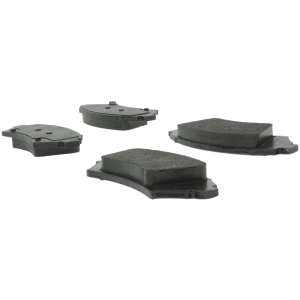
 $22.65Product Specifications
$22.65Product Specifications- Notes: 16" Wheels
- UPC: 805890352396
- Part Description: 2005 Buick LeSabre Premium Semi-Metallic Front Disc Brake Pads
Vehicle Fitment- 2005 Buick LeSabre | All Trims | All Engines

 $28.64Product Specifications
$28.64Product Specifications- Notes: OE Pad Material is Semi-Metallic;with Mechanical Wear Sensor;1st Design;To VIN # 129025;Includes Pad Installation Hardware;with 16in Steel Wheels
- Chamfer Option: With Chamfers
- FMSI: D818
- Friction Material: Semi-Metallic
- Hardware Option: Included
- Inner Pad Thickness: 16.51mm (0.65")
- Outer Pad Thickness: 17.018mm (0.67")
- Quantity: Sold as Set
- Series: QuickStop®
- Shims Option: With Shims
- Slot Option: With Slot
- UPC: 008536385400
- Wear Sensor Option: With Mechanical Wear Sensor
- Part Description: 2005 Buick LeSabre Quickstop Semi Metallic Front Disc Brake Pads
Vehicle Fitment- 2005 Buick LeSabre | All Trims | All Engines

 $17.03Product Specifications
$17.03Product Specifications- Notes: 15" Wheels
- UPC: 805890236443
- Part Description: 2005 Buick LeSabre Premium Semi-Metallic Front Disc Brake Pads
Vehicle Fitment- 2005 Buick LeSabre | All Trims | All Engines

 $23.79Product Specifications
$23.79Product Specifications- Notes: Optional Ceramic;Includes Pad Installation Hardware
- Chamfer Option: With Chamfers
- FMSI: D714
- Friction Material: Ceramic
- Hardware Option: Included
- Inner Pad Thickness: 13.716mm (0.54")
- Outer Pad Thickness: 13.716mm (0.54")
- Quantity: Sold as Set
- Series: QuickStop®
- Shims Option: With Shims
- Slot Option: With Slot
- UPC: 008536322412
- Wear Sensor Option: With Mechanical Wear Sensor
- Part Description: 2005 Buick LeSabre Quickstop Ceramic Rear Disc Brake Pads
Vehicle Fitment- 2005 Buick LeSabre | All Trims | All Engines
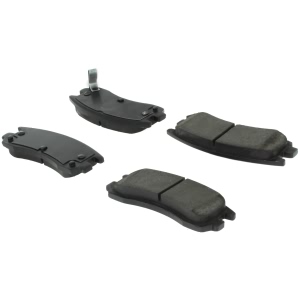
 $16.96Product Specifications
$16.96Product Specifications- UPC: 805890607700
- Part Description: 2005 Buick LeSabre Premium Ceramic Rear Disc Brake Pads
Vehicle Fitment- 2005 Buick LeSabre | All Trims | All Engines

 $22.59Product Specifications
$22.59Product Specifications- Notes: Ceramic
- Attachment Method: Bonded
- Chamfer Option: With Chamfers
- Friction Material: Ceramic
- Inner Pad Thickness: 17mm (0.67")
- Outer Pad Thickness: 17mm (0.67")
- Pad Inner Width: 147.8mm (5.82")
- Pad Outer Width: 147.8mm (5.82")
- Quantity: Sold as Set
- Shims Option: Included
- Slot Option: With Slot
- UPC: 756632133981
- Wear Sensor Option: With Mechanical Wear Sensor
- Part Description: 2005 Buick LeSabre Ceramic Front Disc Brake Pads
Vehicle Fitment- 2005 Buick LeSabre | All Trims | All Engines
1-30 of 51 Results
< Previous
12
Next >FAQ for Brake Pad Set Repair
Q: What should be cautioned in burnishing Pads and Rotors?
A:
Burnishing the brake pads and brake rotors is necessary to ensure that the braking surfaces are properly prepared after service has been performed on the disc brake system. You should select a smooth road with little or no traffic, accelerate the vehicle to 48 km/h (30 mph), apply the brakes to bring the vehicle to a stop, and repeat steps 2 and 3 until approximately 20 stops have been completed and allow sufficient cooling periods between stops to properly burnish the brake pads and rotors.
By Bob
GM Specialist
01/11/2022Q: What should be cautioned in installing the Front Brake Pads?
A:
You should inspect the caliper bolt suspension boots for cuts, tears, or deterioration. If damaged, you should replace the pin boots. Then you should inspect the caliper pin bolts for damage or corrosion and replace them if damaged or corroded. You can not attempt to clean away corrosion. Corrosion is typically caused by damaged pin boots.
By Bob
GM Specialist
01/11/2022Q: What should be cautioned in using the Brake Pad?
A:
You should road test a vehicle under safe conditions and while obeying all traffic laws. You can not attempt any maneuvers that could jeopardize vehicle control Failure to adhere to these precautions could lead to serious personal injury and vehicle damage.
By Bob
GM Specialist
01/11/2022Q: What should be noticed in removing the Rear Brake Pads?
A:
When using a large C-clamp to compress a caliper piston into a caliper bore of a caliper equipped with an integral park brake mechanism, you can not exceed more than 1 mm (0.039 in) of piston travel. Exceeding this amount of piston travel will cause damage to the internal adjusting mechanism and/or the integral park brake mechanism.
By Bob
GM Specialist
01/11/2022Q: What should be cautioned in installing the Rear Brake Pads?
A:
You should inspect the brake caliper piston boot for deterioration, repair or replace the brake caliper if damaged, retract the brake caliper piston into the brake caliper bore, and use a spanner-type wrench to turn the piston clockwise until it bottoms in the brake caliper bore and align the piston.
By Bob
GM Specialist
01/11/2022Q: What should be noticed in removing the Front Brake Pads?
A:
If the brake fluid level is midway between the maximum-full point and the minimum allowable level, no brake fluid needs to be removed from the reservoir before proceeding. If the brake fluid level is higher than midway between the maximum-full point and the minimum allowable level, you should remove the brake fluid to the midway point before proceeding.
By Bob
GM Specialist
01/11/2022See more FAQs (1)

